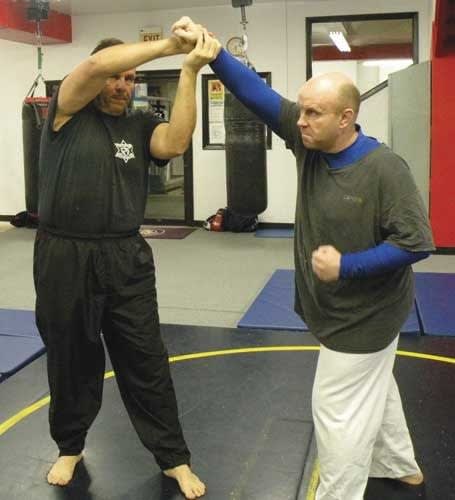Close range is closely tied in with proper control of your opponent. To some degree, at close range you are in the eye (the calm area) of the storm. It is hard for your opponent to get off punches, kicks, gunshots, slashes, or bat blows. In MMA, grabbing the head with both hands and using knees or throwing elbow strikes to the face are often the techniques of choice at this range.
For law enforcement officers, the two-handed Thai clinch has a huge drawback. It allows the assailant access to your weapon. It is critical in close range to maintain control of your opponent to avoid being disarmed, taking unnecessary damage, and/or allowing him or her to escape.
The three points of control in upper body grappling are the head, elbow, and hip. Control of two out of three of these points on your opponent means he is going where you want him. But there is a major adjustment that you have to make as a sidearm carrying cop when facing an opponent.
When engaging at close range, a strong strategy is for you to have wrist control of your opponent's weapon side arm. Put your arm inside your opponent's arm, then wrap it around your opponent's torso with the elbow flared high underneath the opponent's elbow to prevent him or her from reaching your weapon. Keeping your forehead pressed tightly underneath or against the side of your opponent's jaw in this position allows you even greater control of her movement and reduces the chance of random biting. There are a number of takedowns that can be pulled off from this position. It will allow you to control the opponent relatively safely until you advance your position or help arrives.
Weapons, multiple opponents, and the lethal nature of street confrontations separate them greatly from sport fights.












